Treating Trauma
Becoming Strong at Our Broken Places

When we are hurt, a part of us can break.
Maybe we are holding it together on the outside, but feel like a mess on the inside.
Sometimes it feels like we are falling apart.
We don’t always know how to heal ourselves
But we can become whole again.
The buttons below will take you to more information about how I conceptualize trauma and the different interventions I am trained in to treat trauma and the symptoms it can cause.
The symptoms we experience in the present have a connection to the past.

Kintsuji/Kintsukuroi
The Japanese art of repairing broken pottery by mending the areas of breakage with lacquer mixed with powdered gold or silver. Examples are featured in the picture of the bowl at the top of this web page, and the clay hand below.
As a philosophy, it treats breakage and repair as part of the history of an object, rather than something to disguise.
This is how I like to think about healing and recovering from the events in our lives that impact us deeply.
Embracing the parts of ourselves that were hurt.
Becoming strong at the once broken places.

EMDR/Eye Movement Desensitization and Reprocessing
EMDR was founded in 1987 by Francine Shapiro and is currently one of the most researched methods of contemporary psychotherapy. EMDR will enable you to heal from the symptoms and emotional distress resulting from disturbing life experiences.
When events happen unexpectedly or cause significant disturbance, those memories often get “stuck” and are maladaptively stored in our nervous systems. In time, this will usually manifest into symptoms such as anxiety, depression, PTSD, OCD, addictions, and so forth. A skilled EMDR therapist can assist the brain in reprocessing these “stuck” memories, allowing routine healing to resume. Of course, the traumatic experience will always remain a memory, but we will resolve the physical disturbance and any negative beliefs associated with the memory, thereby reducing mental health symptoms.
Who Can Benefit From EMDR Therapy?
EMDR therapy helps children and adults of all ages. Therapists use EMDR therapy to address a wide range of challenges:
Performance anxiety
Personality disorders
PTSD and other trauma and stress-related issues
Sexual assault
Sleep disturbance
Substance abuse and addiction
Violence and abuse
Anxiety, panic attacks, and phobias
Chronic illness and medical issues
Depression and bipolar disorders
Dissociative disorders
Eating disorders
Grief and loss
Pain
You can watch a brief video about EMDR with this link.
For more information, please visit EMDRIA (EMDR International Association).
"Courtesy of EMDR International Association" at https://www.emdria.org

Internal Family Systems Therapy (IFS) is a therapeutic model that views the mind as a collection of distinct but interconnected parts. These parts often carry various emotions, beliefs, and roles, influencing our thoughts and behaviors. IFS recognizes that these parts are not just random fragments; they form an intricate system working together, much like a family.
The central concept in IFS is the "Self," which represents the core of an individual, an inherently calm, compassionate, and confident center within each of us. The goal of IFS is to help individuals connect with and lead from their core Self.
The therapeutic goal of IFS is to promote harmony and integration within the internal system. This involves helping individuals understand, communicate with, and ultimately heal the different parts. By fostering a relationship between the Self and these parts, individuals can achieve a sense of balance, self-compassion, and overall well-being.
In an IFS therapy session, individuals work with a trained therapist to explore their internal system. The therapist helps the client identify and understand their different parts, which can range from protective or wounded parts to more positive and nurturing ones. Through guided visualization and dialogue, they learn to identify and understand the roles of different parts, addressing any conflicts or burdens that may exist. The process encourages self-discovery, healing, and the development of a more compassionate relationship with oneself. The ultimate goal of parts work is to integrate these different parts into a more cohesive and harmonious whole. Some parts may carry emotional wounds or traumatic memories. Parts work aims to provide a safe space for these wounded parts to express themselves, be acknowledged, and undergo a process of healing.
Internal Family Systems has been applied to a wide range of mental health issues, including anxiety, depression, trauma, and relationship challenges. It is recognized for its holistic and non-pathologizing approach, emphasizing the inherent wisdom within individuals and their capacity for self-healing.
For more information: https://ifs-institute.com/
Internal Family Systems/IFS

Flash Technique
The Flash Technique (FT) is a recently developed evidenced-based therapeutic intervention for reducing the disturbance associated with traumatic or other distressing memories. Unlike many conventional trauma therapy interventions, FT is a minimally intrusive option that does not require the client to consciously engage with the traumatic memory. This allows the client to process traumatic memories without feeling distress. As an adjunct to the EMDR preparation phase or any exposure-based treatment, it makes it possible to process memories that would otherwise be intolerable or overwhelming to the client.
Who can benefit from the Flash Technique?
FT can help children and adults of all ages. It is useful in a wide variety of presenting complaints including anxiety, obsessive-compulsive disorder, mild and severe dissociation, depression and more.
For more information go to: flashtechnique.com

Progressive Counting/PC
Target Population: Adults who have experienced trauma and loss; has been used with teens and children ages 6 and up
Progressive counting (PC) is a recently developed trauma treatment, based on the counting method, that is already supported by several published studies. As per the research and clinical experience to date, PC appears to be about as effective, efficient, and well tolerated as EMDR. PC involves having the client visualize a series of progressively longer “movies” of the trauma memory while the therapist counts out loud (first to a count of 10, then 20, then 30, etc., up to a maximum of 100). As the distress level goes down, the movies get shorter. This continues until no memory-related distress remains. PC can be done as a stand-alone treatment or within the context of a comprehensive phase model of trauma-informed treatment.
Dr. Greenwald is PC’s developer, and The Trauma Institute/Child Trauma Institute (TICTI) is the primary source of PC training internationally.
What is it used for? By healing from disturbing memories, PC is used to reduce or eliminate symptoms such as anxiety, depression, guilt, anger, and post-traumatic reactions. It can also be used to enhance psychological resources such as confidence and self-esteem.
What happens in a session? By repeatedly imagining the “movie” of the memory, the memory gets “digested” or healed, perhaps via desensitization, emotional processing, gaining perspective, or other means. Sometimes a painful memory brings up unpleasant emotions; this generally passes within a few minutes, as long as the PC is not stopped. Ultimately, the upsetting emotion or memory often seems to fade into the past and lose its power.
Why bring up a painful memory? When the memory is avoided, it keeps its disturbing power. However, a flashback, nightmare, or obsessive recall can feel as upsetting as the original experience, yet not be helpful. In therapy, and with PC, you can face the memory in a safe setting, in a structured way so that you do not feel overwhelmed. Then you can get through it and move on.
For more information check out the Trauma Institute/Child Trauma Institute.

Emotional Freedom Technique (EFT)/Tapping
Also known as “Tapping”
(EFT) is an intervention during which the client engages in adding pressure to or lightly tapping against accupressure points along the head, face, and collar bone. This is where the nickname “tapping” originates. It combines Cognitive Therapy, Exposure Therapy, and Somatic Stimulation allowing the client to gain clarity and resolution. This supports the client in making changes (emotional and/or physical), shifting limited thought processes, resolving past traumas, and considering other beneficial ways to move forward in their lives.
EFT draws on various theories of alternative medicine – including acupuncture, neuro-linguistic programming, energy medicine, and Thought Field Therapy (TFT). It is best known through Gary Craig's EFT Handbook, published in the late 1990s, and related books and workshops by a variety of teachers. EFT and similar techniques are often discussed under the umbrella term "energy psychology."
For more information:
Official EFT by creator Gary Craig

